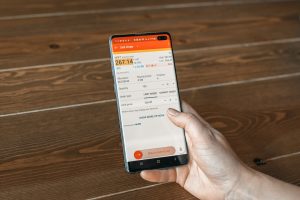Forex trading is a popular investment option for many traders, and one of the biggest advantages of trading in forex is the ability to use leverage. Leverage is a powerful tool that allows traders to control a large position with a small investment. In this article, we will explore what leverage is, how it works in forex trading, and the risks and benefits associated with it.
What is leverage in forex trading?
Leverage is a financial tool that allows traders to control a large position with a small investment. In forex trading, leverage is essentially borrowing money from a broker to increase the potential return on a trade. The amount of leverage available to a trader depends on the broker and the account type they choose. For example, a broker may offer a leverage ratio of 50:1, which means that for every $1 invested, the trader can control $50 worth of currency.
How does leverage work in forex trading?
To better understand how leverage works, let’s consider an example. Let’s say a trader wants to invest in the EUR/USD currency pair, and the current exchange rate is 1.2000. The trader expects the exchange rate to increase, so they decide to buy 10,000 units of EUR at the current rate. Without leverage, the total cost of this trade would be $12,000 (10,000 x 1.2000).
However, if the trader uses leverage of 50:1, they only need to put up 2% of the total trade value as margin, or $240 (2% of $12,000). The broker will provide the remaining 98% of the trade value, or $11,760. This means that the trader can control a position worth $12,000 with only $240 of their own money.
If the exchange rate increases to 1.2100, the trader can sell their position and make a profit. Without leverage, the profit would be $100 (10,000 x 0.0100). However, with leverage, the profit would be $5,000 (10,000 x 0.0100 x 50). This is because the trader is controlling a position worth $600,000 (10,000 x 1.2100 x 50) with only $12,000 (2% of $600,000) of their own money.
Benefits of leverage in forex trading
The biggest advantage of leverage in forex trading is the ability to control a larger position with a smaller investment. This can increase the potential return on a trade and allow traders to take advantage of small price movements in the market. For example, if a trader expects the exchange rate to increase by only 1%, they can still make a significant profit with leverage.
Another benefit of leverage is that it can help traders manage their risk. By using leverage, traders can limit the amount of money they put at risk in a trade. This is because they only need to put up a small percentage of the total trade value as margin. If the trade goes against them, they will only lose their initial investment, not the full trade value.
Risks of leverage in forex trading
While leverage can increase the potential return on a trade, it also increases the potential risk. If the trade goes against the trader, they can lose more than their initial investment. This is because they are controlling a larger position than they could with their own money. For example, if the trader in our earlier example had used leverage of 100:1 instead of 50:1, they would have lost $11,760 (98% of the trade value) instead of $240 (2% of the trade value) if the exchange rate had fallen by 1%.
Another risk of leverage is that it can lead to overtrading. When traders have access to a large amount of leverage, they may be tempted to take on more trades than they can handle. This can lead to poor decision-making and ultimately result in losses.
Conclusion
Leverage is a powerful tool that can increase the potential return on a trade and help traders manage their risk. However, it also increases the potential risk and can lead to overtrading if not used responsibly. It’s important for traders to understand how leverage works and to use it wisely. By doing so, they can take advantage of the benefits of leverage while minimizing the risks.





